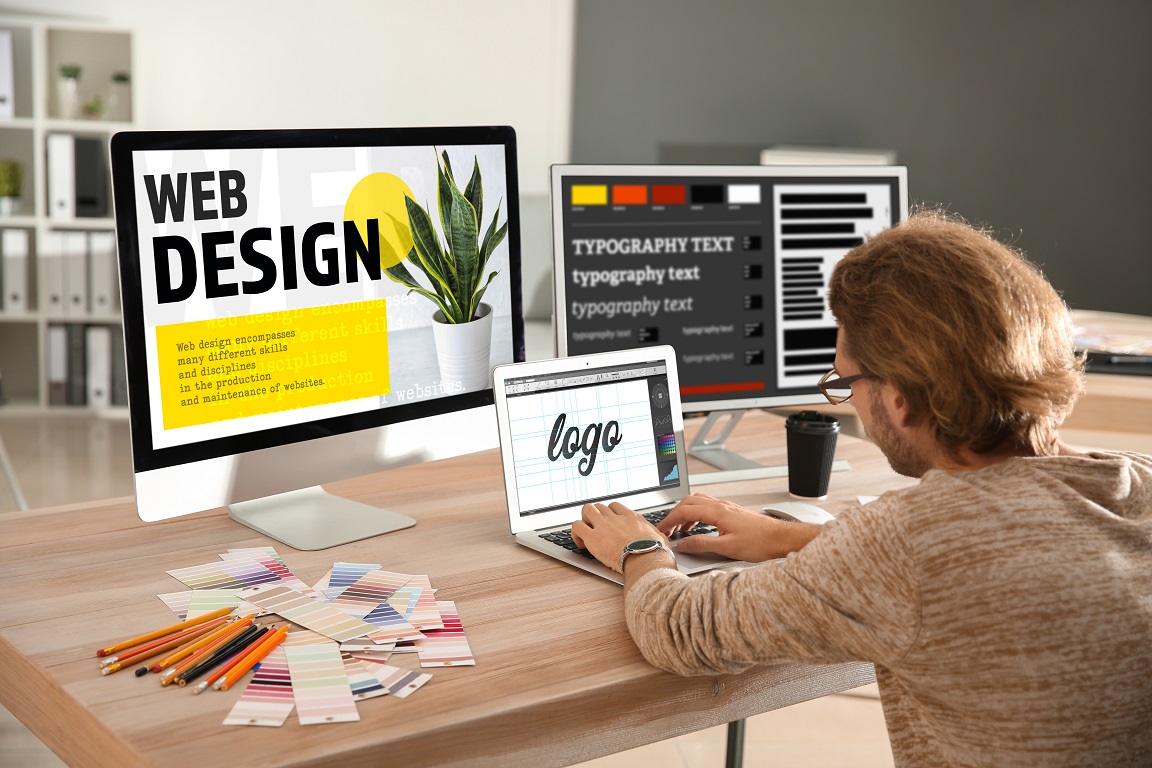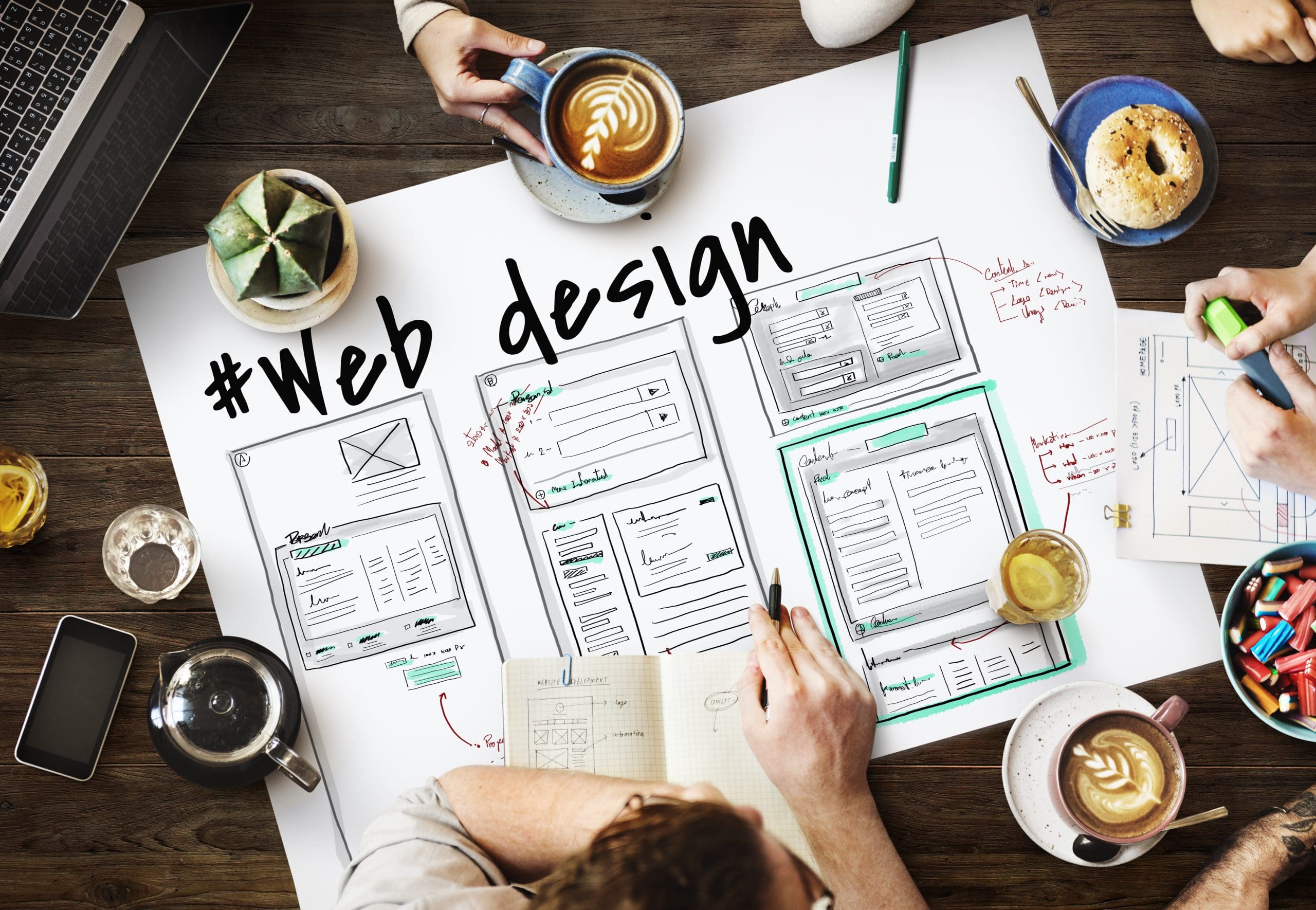The Importance of User Experience in Effective Web Design Methods
User experience (UX) acts as a foundation in reliable web design techniques. It forms exactly how individuals connect with a website, influencing their satisfaction and probability of returning. A properly designed UX can improve engagement through user-friendly navigating and responsive formats. Ignoring these aspects might lead to irritation and enhanced bounce rates. Understanding the details of UX is important for designers intending to create compelling electronic experiences that resonate with varied target markets. What factors really drive effective user interaction?
Recognizing User Experience and Its Effect On Style
User experience (UX) is usually viewed as a plain element of internet style, it basically shapes exactly how users interact with a website. UX encompasses all aspects of the user's interaction, including usability, access, and general fulfillment. A positive UX promotes engagement, motivating customers to explore the website and return in the future. On the other hand, an unfavorable experience can bring about aggravation, resulting in high bounce rates and shed chances for conversion.
Layout aspects like navigating, format, and material organization play essential roles fit this experience. Effective UX design expects user requirements and preferences, guaranteeing that information is aesthetically appealing and quickly accessible. Furthermore, understanding user actions via analytics can offer valuable insights, educating style decisions that improve usability. Ultimately, a thorough understanding of UX allows designers to develop web sites that not only bring in individuals however also advertise significant communications that line up with business objectives and user expectations.
Trick Principles of Reliable User Experience
Reliable user experience depends upon numerous key principles that boost web site functionality and interaction. User-friendly navigation style, receptive format fundamentals, and the significance of aesthetic power structure are crucial elements that contribute to a seamless communication in between users and internet material. Understanding these concepts enables developers to produce more easy to use and accessible digital atmospheres.
User-friendly Navigation Style
When customers experience an internet site, instinctive navigation layout acts as a vital gateway to their overall experience. Reliable navigating allows customers to effortlessly find the information they seek, boosting their communication with the site. Key principles consist of clear labeling, logical company, and regular placement of navigation aspects. Labels ought to be straightforward, permitting individuals to anticipate the web content they will find. A well-structured hierarchy aids individuals comprehend the connection between various areas, assisting them with the web site seamlessly. Furthermore, responsive menus and easily accessible links contribute to a liquid experience throughout tools. By focusing on instinctive navigation, developers can significantly reduce user stress and rise involvement, ultimately promoting a positive assumption of the website and its web content.
Receptive Format Fundamentals
A well-structured navigation system naturally causes the demand for a responsive design, which is necessary in today's varied digital landscape. A receptive format assurances that websites feature seamlessly throughout different tools, consisting of desktops, smart devices, and tablet computers. This adaptability enhances user experience by allowing content to be visually systematic and easily available, despite screen dimension. Key principles of responsive layout consist of fluid grids, flexible pictures, and media questions, which facilitate perfect watching. Furthermore, focusing on touch-friendly elements boosts interaction on smart phones. By applying a responsive format, designers can fit users' requirements, minimize bounce rates, and rise interaction. Inevitably, a well-executed receptive layout promotes a positive user experience, encouraging visitors to discover the website even more.
Aesthetic Power Structure Significance
Visual hierarchy plays a necessary duty in assisting customers through a site, guaranteeing that important details records their focus. By strategically utilizing size, spacing, comparison, and color, designers can produce a clear path for customers to adhere to. Bigger elements usually draw the eye, indicating their value, while contrasting shades can highlight telephone calls to activity. In addition, regular alignment and grouping of relevant material enhance understanding, making navigation intuitive. Efficient use of aesthetic pecking order not just enhances functionality but likewise supports the overall aesthetic of the website, cultivating a favorable user experience. When users can conveniently determine one of the most vital information, they are more probable to involve with the material, causing boosted contentment and communication with the site.
The Role of Use in Web Design
Usability plays a necessary function in web design, particularly via navigating simplicity and adherence to ease of access requirements. Reliable navigation improves user contentment by allowing site visitors to find info rapidly and without effort. Meeting accessibility requirements guarantees that all customers, regardless of their capacities, can effectively connect with the web site.
Navigating Simplicity
Simpleness in navigation stands as a keystone of effective web design, substantially influencing user experience. A structured navigating system allows individuals to locate details rapidly and without effort, lowering frustration and improving contentment. Clear labeling and rational framework are crucial elements, assisting customers effortlessly through the site. Repetitive links or excessively complicated food selections can confuse customers, bring about increased bounce rates. Furthermore, mobile responsiveness needs to be taken into consideration, ensuring navigation stays uncomplicated throughout devices. Decreasing and focusing on necessary pages clutter better sustains user engagement. Effective navigating not only fosters a favorable experience yet additionally urges customers to explore the website much more completely, ultimately resulting in higher conversion prices. In this respect, navigation simplicity functions as a crucial factor visit site in the general performance of web design techniques.
Ease of access Specifications
User engagement is significantly boosted when web sites abide by accessibility criteria, ensuring that all individuals, no matter their abilities, can browse and communicate effectively. Compliance with these requirements not only broadens the audience yet also enhances total user contentment. Obtainable style includes functions such as text alternatives for images, key-board navigation, and sufficient shade comparison, which assist in use by people with specials needs. Web Site In addition, applying these criteria can favorably influence search engine optimization (SEO) by boosting website structure and clearness. As web design progresses, focusing on access comes to be necessary in cultivating an inclusive digital environment. By embracing these criteria, designers add to a more fair web, ultimately driving user loyalty and engagement.
Importance of Responsive Style for User Interaction
As consumers significantly gain access to internet sites with a selection of tools, the relevance of receptive design becomes vital for involving customers properly. Responsive style assurances that an internet site adapts effortlessly to different display sizes, providing a perfect viewing experience no matter the tool made use of. This versatility boosts user involvement by helping with easier navigating and interaction with content.
When customers come across a site that is receptive, they are more probable to remain much longer, check out better, and return in the future. A properly designed responsive format reduces the stress frequently related to zooming and scrolling on smaller sized screens, thus lowering bounce rates. Furthermore, receptive layout can positively influence online search engine rankings, as online search engine prioritize mobile-friendly websites. In today's digital landscape, where mobile use remains to rise, executing receptive layout is not simply valuable, but essential for preserving user involvement and ensuring a favorable experience across all tools.
Enhancing Load Times for Better User Satisfaction

To improve lots times, internet developers need to prioritize maximizing pictures, leveraging browser caching, and reducing HTTP demands. In addition, employing Content Delivery Networks (CDNs) can accelerate content delivery by dispersing it throughout numerous geographical locations. Enhancing code, such as pressing CSS and JavaScript documents, better contributes to much faster packing rates.
Inevitably, a dedication to improving tons times not only enhances user fulfillment yet likewise reinforces brand loyalty and enhances the likelihood of repeat sees. A swift, smooth experience is vital for maintaining individuals and promoting favorable interactions.
The Impact of Visual Hierarchy on User Interaction
Visual power structure offers as an important aspect in assisting user communication on a web site. By organizing web content in such a way that focuses on info aesthetically, developers can affect exactly how customers involve and browse with a website. This power structure is established via various layout strategies, including size, shade, contrast, and spacing. As you can find out more an example, bigger fonts or strong colors accentuate essential elements, such as telephone calls to activity or headlines, while subdued shades and smaller sized typefaces can indicate secondary details.
Efficient aesthetic power structure helps customers quickly determine what is most crucial, reducing cognitive tons and enhancing use. It permits intuitive navigation, making it easier for users to discover what they require without disappointment. As individuals engage with an internet site, a well-structured visual power structure promotes a much more enjoyable experience, ultimately resulting in greater involvement and conversion prices. Designers need to prioritize these principles to produce an user-centered and reliable web atmosphere.
Determining User Experience: Devices and Methods

Frequently Asked Concerns
How Can I Enhance My Website's User Experience on a Budget plan?
To improve an internet site's user experience on a spending plan, one can optimize page lots rate, simplify navigation, apply receptive style, enhance content clearness, and collect user responses for continuous improvements, guaranteeing a satisfying visitor experience.
What Prevail User Experience Blunders to Stay Clear Of in Web Design?
Typical user experience blunders in web design consist of messy layouts, poor navigating, sluggish loading times, absence of mobile responsiveness, neglecting accessibility, irregular branding, and stopping working to focus on user feedback - Web Design Agency. Each can greatly prevent general website efficiency
How Typically Should I Update My Web Site for Better User Experience?
Sites ought to be updated consistently, preferably every couple of months, to preserve suitable user experience. Frequent updates aid address functionality problems, refresh web content, and adapt to altering user needs, making certain the website stays interesting and appropriate.

Can User Experience Effect SEO Rankings on My Web site?
User experience can considerably influence search engine optimization rankings, as online search engine focus on websites that offer smooth navigation, quick packing times, and interesting content. A positive user experience can result in lower bounce prices and higher search presence.
What Duty Does Accessibility Play in User Experience Style?
Ease of access plays a crucial duty in user experience style by ensuring that all individuals, regardless of capacities, can engage and browse with a site successfully. This inclusivity enhances overall complete satisfaction and engagement amongst diverse individuals.
User experience (UX) is often perceived as a simple aspect of web design, it fundamentally shapes how individuals communicate with a website. User engagement is significantly improved when internet sites adhere to accessibility requirements, ensuring that all users, regardless of their capacities, can navigate and engage successfully. Gauging user experience (UX) is crucial for comprehending just how properly a website meets the demands of its users. Furthermore, usability testing, where real individuals browse the site while viewers keep in mind problems, uses direct responses on user experience. Common user experience blunders in web layout include cluttered layouts, inadequate navigating, sluggish filling times, lack of mobile responsiveness, neglecting availability, irregular branding, and falling short to focus on user responses.